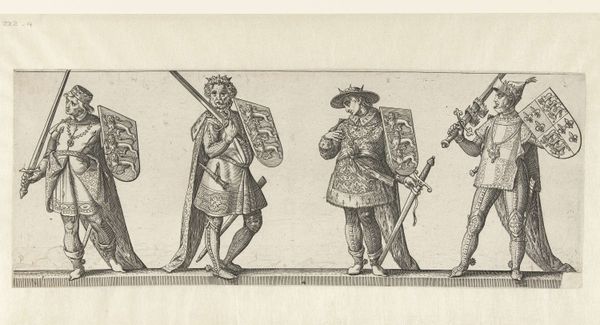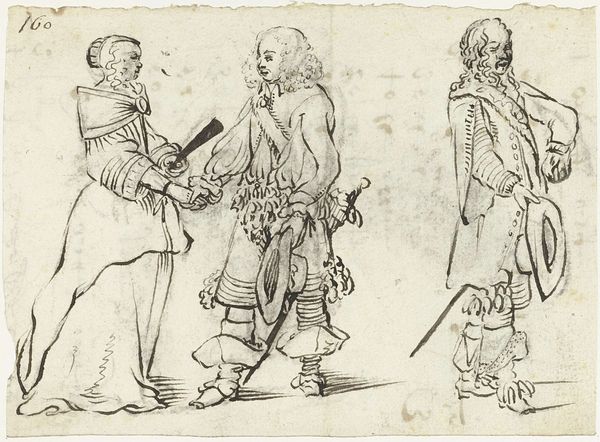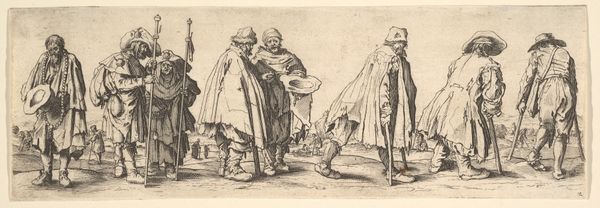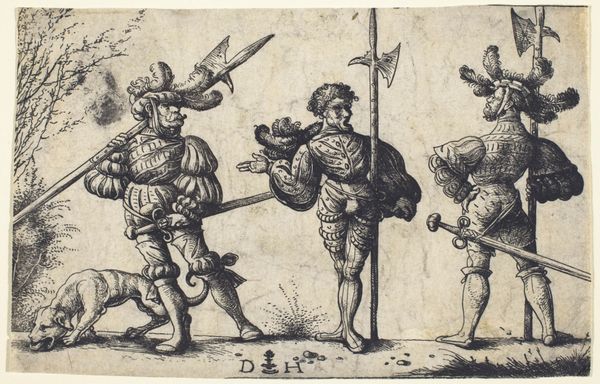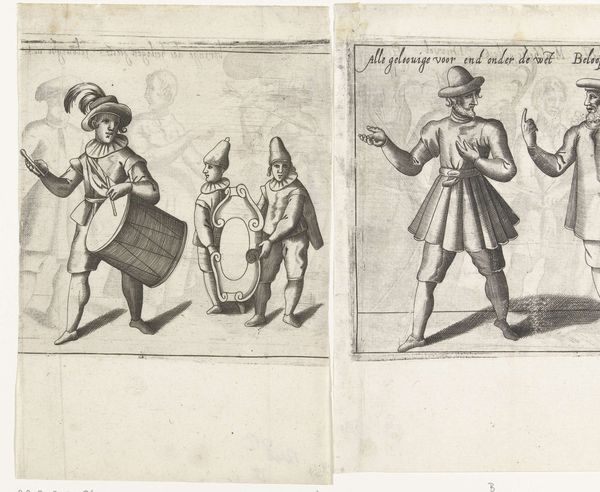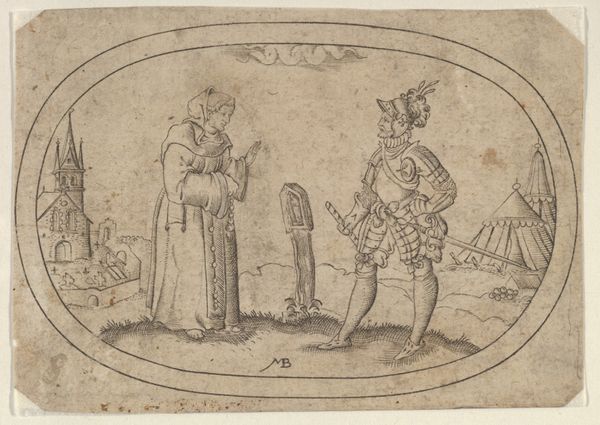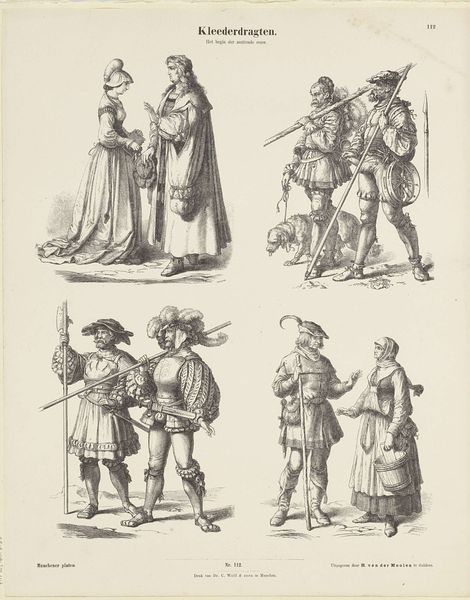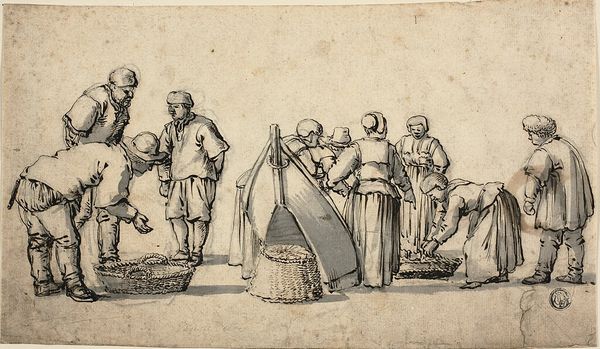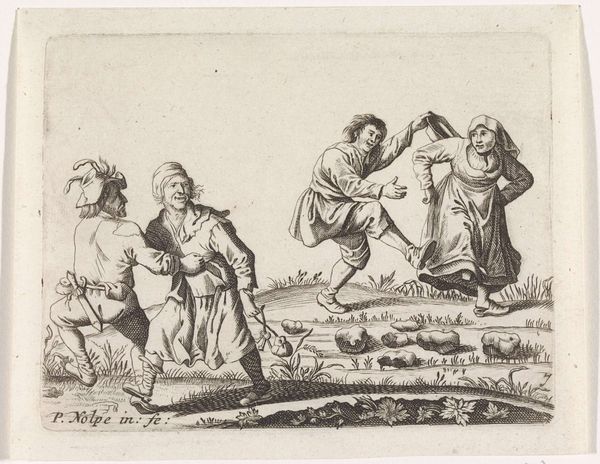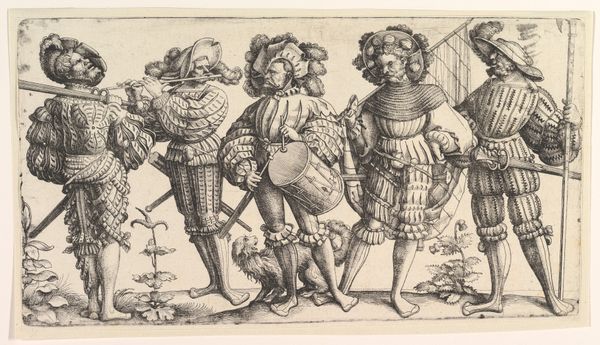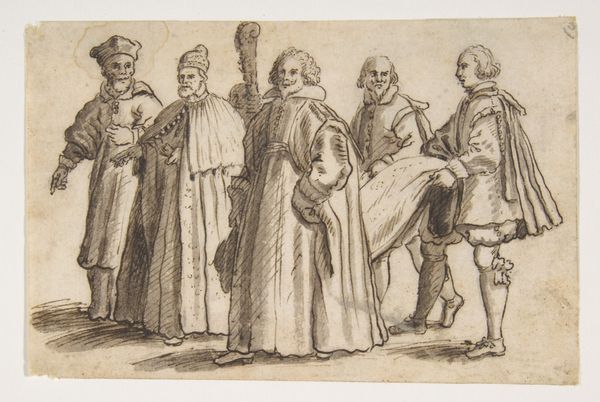
print, engraving
#
medieval
# print
#
pen sketch
#
figuration
#
history-painting
#
academic-art
#
engraving
Dimensions: height 205 mm, width 325 mm
Copyright: Rijks Museum: Open Domain
This print, made by an anonymous artist, depicts Keizer Trajanus met rechter en Keizer Augustus met boer. Its meaning is rooted in the cultural and political landscape of its time, likely the 16th or 17th century in the Netherlands or Germany. The image creates meaning through the contrast between the idealized figures of the emperors, symbols of power and justice, and the ordinary men kneeling before them. The emperors, adorned with symbols of authority, represent the established social order. The kneeling figures represent the common people, dependent on the rulers. The image reflects the hierarchical social structures of early modern Europe. The choice of classical figures suggests a connection to the idealized past, and the print may comment on contemporary social structures. Was it self-consciously conservative or progressive? Did it critique the institutions of art? Understanding this print fully requires delving into historical sources, such as political pamphlets, social commentaries, and institutional records of the time. Only then can we grasp its true meaning.
Comments
No comments
Be the first to comment and join the conversation on the ultimate creative platform.
